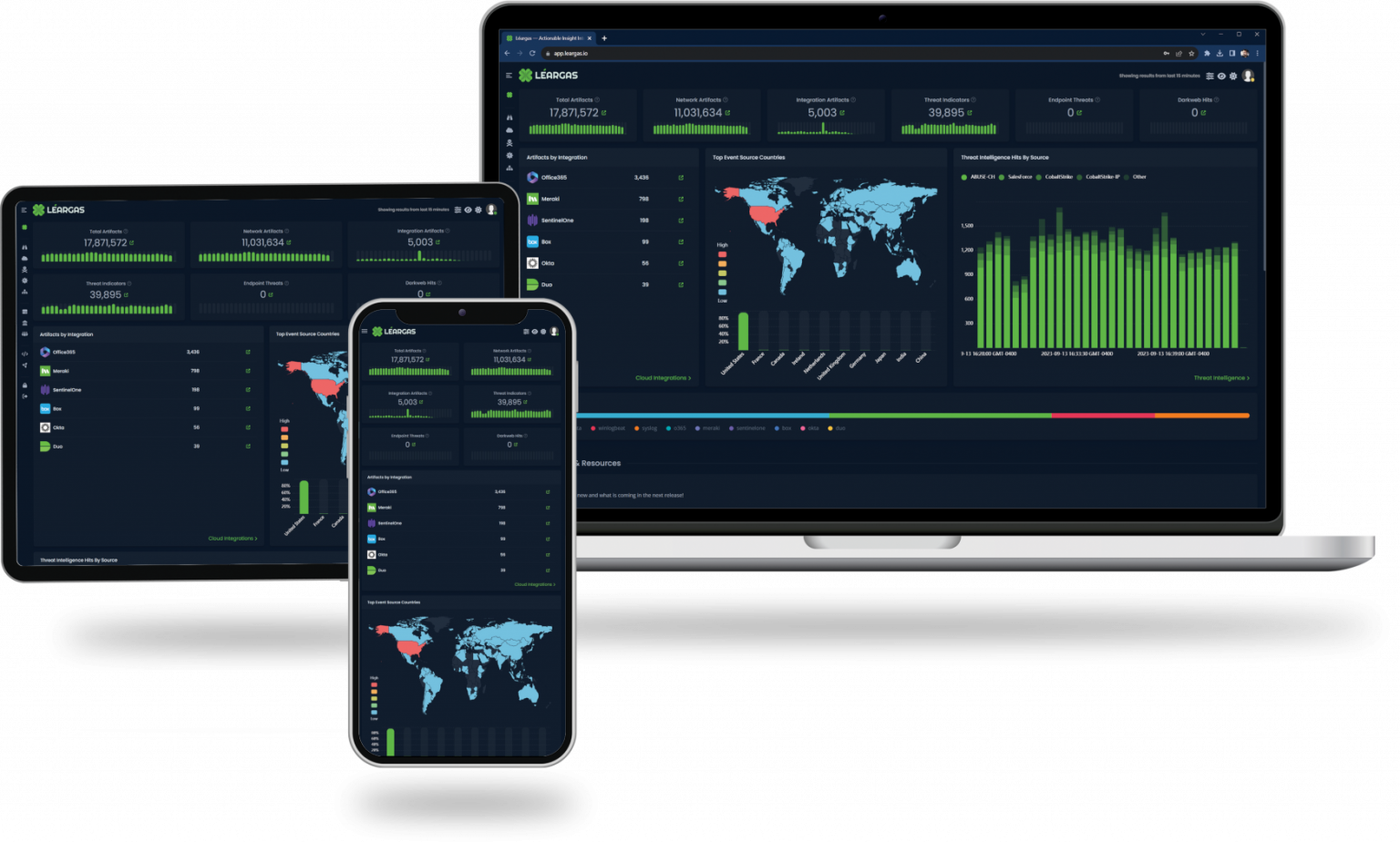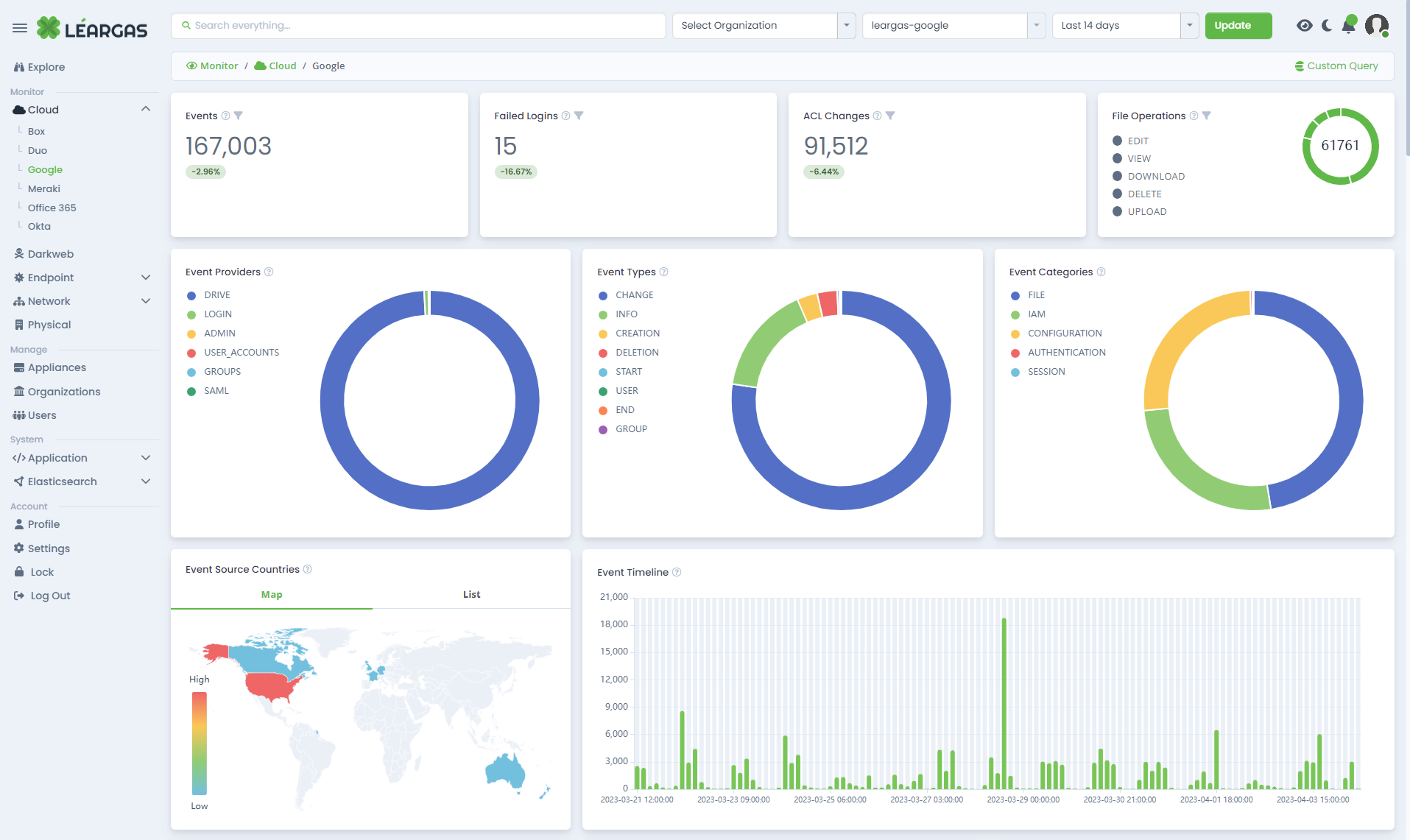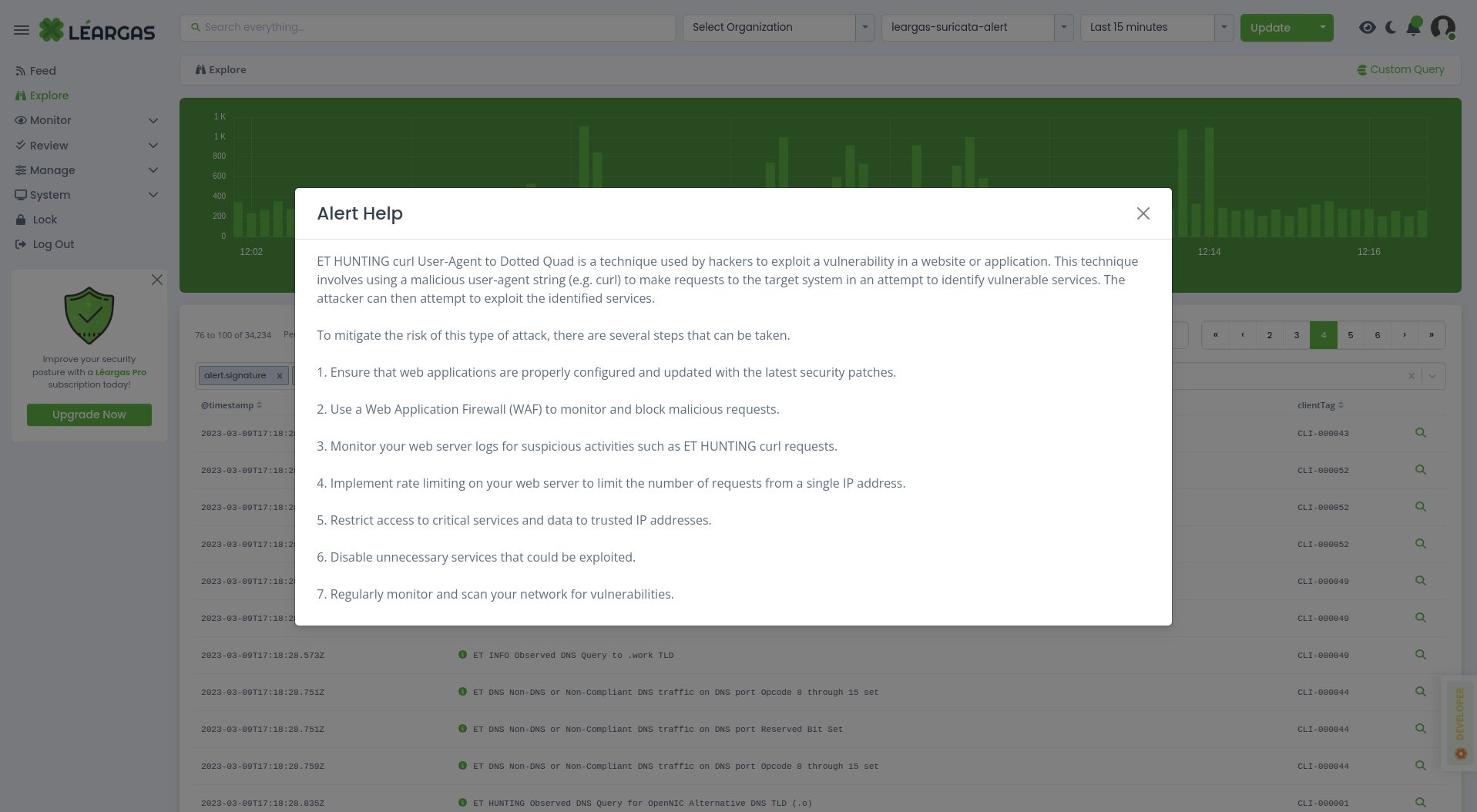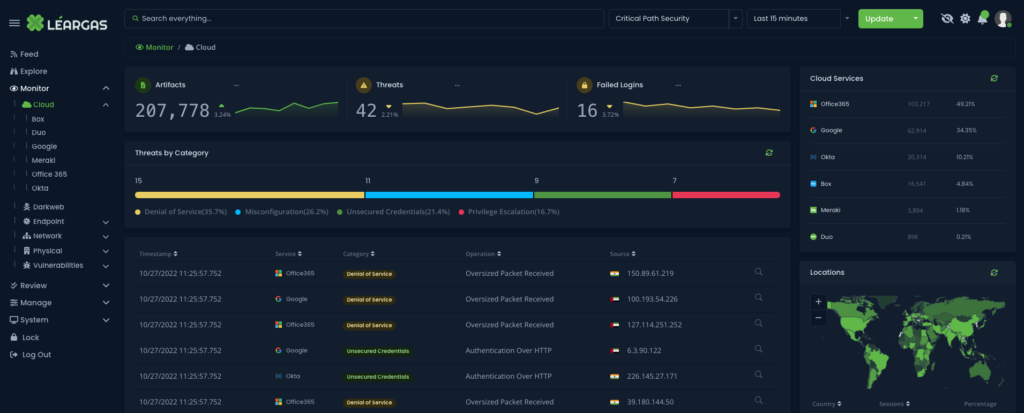We are thrilled to announce the upcoming release of Léargas XDR version v0.1.0-beta.5, which includes several new features, enhancements, and performance improvements designed to optimize your experience and streamline your security operations. Here’s what you can expect in this version:
New Features
- Search Filter Pinning
Users can now pin filters to persist across multiple dashboards, ensuring continuity and efficiency in multi-dash data analysis. - Save Your Searches
Save frequently used queries for quick and easy retrieval, making your data exploration faster than ever. - New CloudTrail Dashboard
A dedicated AWS CloudTrail dashboard that offers robust monitoring tools, helping you stay on top of your cloud resource management and performance insights. - New Azure Dashboard
Our Azure dashboard provides detailed analytics and monitoring of cloud resources, enhancing operational insights. - Bulk Filter Operations
Gain comprehensive control over filtering strategies with bulk operations, such as disabling or removing multiple filters with a single click. - Free Text/Lucene Searches
Enhanced search functionality allows users to streamline complex queries into actionable data faster.
Enhanced Features
- Improved AI Enrichment
AI-powered insights are now more customizable, delivering deep analysis and improved contextual data understanding across various fields. - Enhanced Filtering
Advanced custom field selection and filtering options make data exploration more flexible and intuitive. - Top Field Values
Quickly prioritize critical data with fast access to top field results based on the selected scope. - Context Menus
Context menu options now offer better workflow integration, improving your operational efficiency and saving valuable time during routine tasks.
Revamped Dashboards
- Improved Microsoft 365 Dashboard
The Microsoft 365 dashboard has been optimized to deliver more comprehensive insights, helping you streamline monitoring and increase productivity. - Improved Windows Dashboard
We’ve deepened insights and enhanced interactivity on the Windows dashboard to simplify system monitoring. - Improved Overview Dashboard
A completely revamped overview dashboard offers smoother navigation and a more intuitive user experience.
Other Key Enhancements
- Timeline Improvements
Timeline charts have been upgraded for greater precision and accuracy in visual data representation. - Infinite Scroll
Our Artifact Explorer now includes infinite scrolling, allowing continuous browsing of large datasets without interruption. - Collapsible Details
Table details are now collapsible, creating a smoother data viewing experience and making complex reports easier to navigate.
With these new capabilities and improvements, Léargas XDR aims to provide you with the most powerful tools for comprehensive security management and insights. Stay tuned for the full release and further updates!












 The leading question around the Cybersecurity community has been, “Will ChatGPT and OpenAI change Cybersecurity?“.
The leading question around the Cybersecurity community has been, “Will ChatGPT and OpenAI change Cybersecurity?“.

